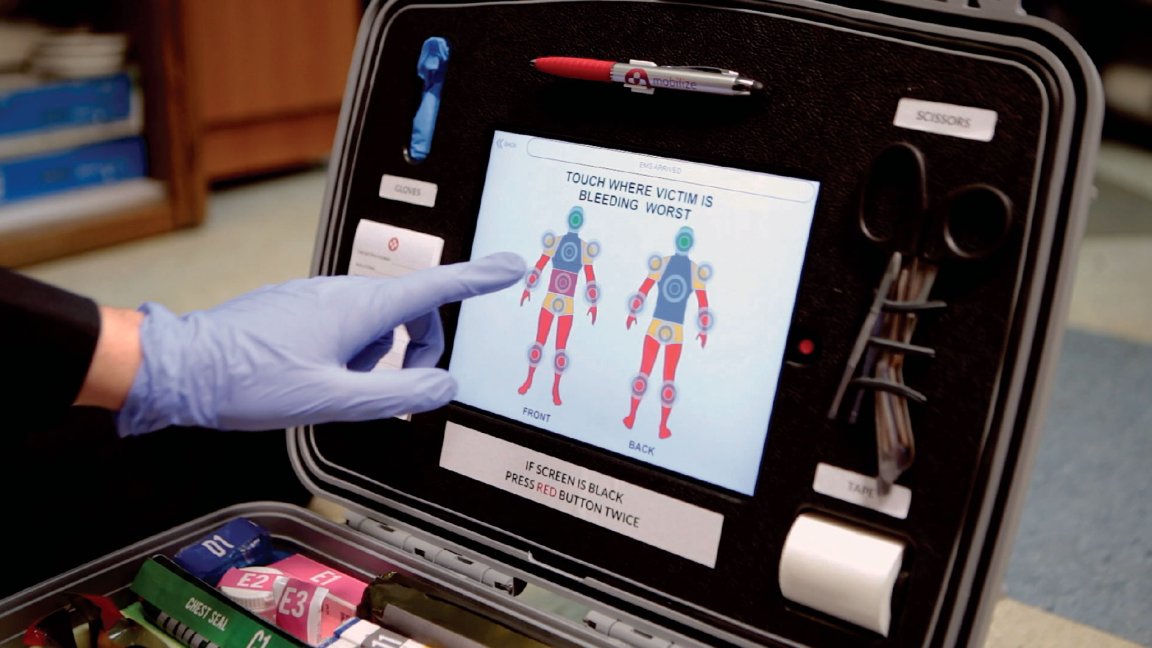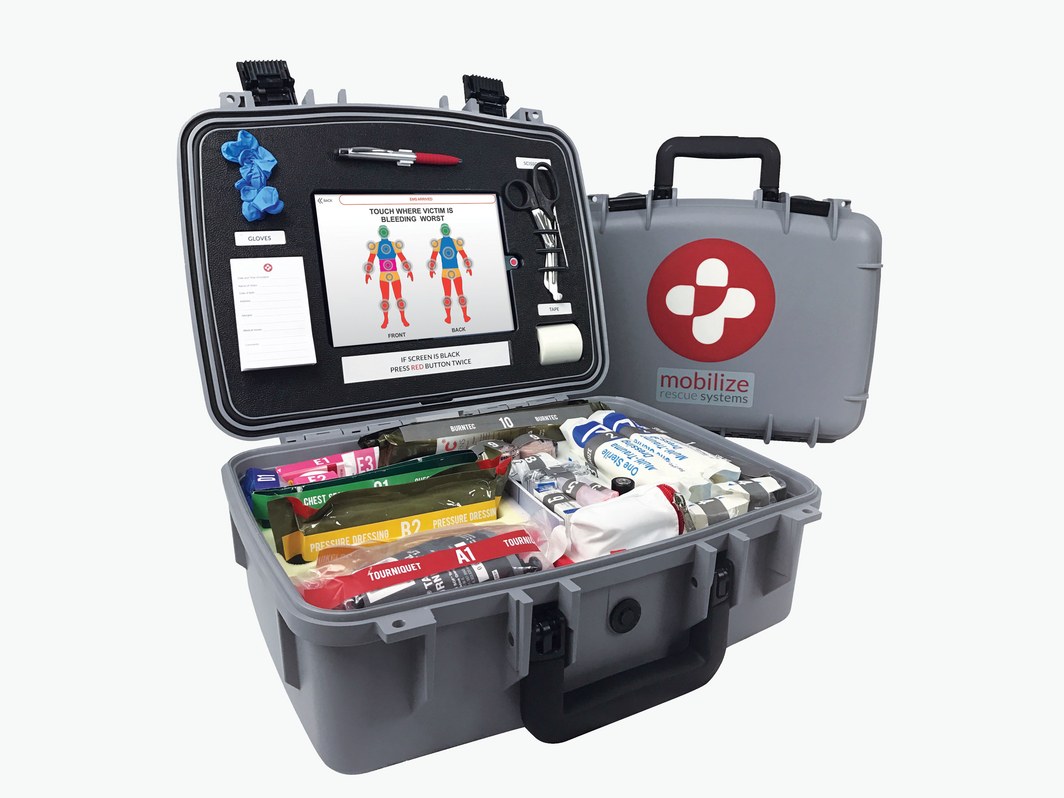
The Comprehensive Rescue System
Emergency management startup Mobilize Rescue Systems has created what experts are calling the “Cadillac of first aid kits” in its Comprehensive Rescue System. The medical supplies packed into each chest are impressive, including things like QuikClot and chest seals, and color-coded for faster use in an emergency. But it’s the intelligent direction the kit supplies that really sets the Comprehensive Rescue System apart.
The kit comes with an iPad included in its lid, which runs an interactive app designed for bystanders with no medical training to use and understand. The app contains about 1,600 pages of emergency-response and triage decision-trees compiled by the team at Mobilize Rescue, a team that counts emergency medicine physicians, SWAT- and military medics, and EMS providers among its members. The chain of simple prompts from the app all connects back to the overarching goal: first aid is only as effective as the person providing it, so it should be as clear and easy as possible for bystanders to provide that care in emergencies.
Mobilize Rescue’s kit not only features the tablet and app, but a fully coded relationship between those smart components and each item within the kit — hence, the color coding. The screen shows the user animations, color-coded illustrations, and planograms so they can locate exactly what’s needed quickly and then use them correctly. The supplies intended for the most time-sensitive needs are placed to be closest at hand, with other supplies arranged in descending order.

Why is this any better than traditional emergency kits and training? Mine rescue trainer and overseer of the Colorado School of Mines’ Energy, Mining, and Construction Industry Safety Program, Collin Smith, told Wired: “On remote job sites, a paramedic is almost always more than 20 minutes away. And depending on the injury, you may not have 20 minutes.” And while employees can of course receive training, emergencies are stressful, people are unpredictable, and training wears off. “In a high-pressure scenario, you might not remember what you were taught six months ago, so it helps to be guided through it.”
The Next AED
Back before there were automated external defibrillators (AEDs) available in most public places, people were more likely to die from cardiac arrest. The advent of the AED made it possible for a bystander without medical training to actually shock and resuscitate someone having a heart attack. AEDs are so significant that the American Red Cross says, “improved training and access to AEDs could save 50,000 lives each year. The Red Cross believes that all Americans should be within four minutes of an AED and someone trained to use it.”

The Comprehensive Rescue System has the potential to have this kind of impact. According to the Centers for Disease Control (CDC), injuries and violence are equal opportunity killers, affecting people of all ages, economic statuses, and races. During the first half of life, more Americans die from injuries and violence, including falls, automobile crashes, and homicides, than from any other cause. Injury is the leading cause of death for people ages 1 to 44, beating out cancer, the flu, and HIV.
Around half of these deaths happen where the injury occurred or en route to the hospital, so clearly faster treatment is a critical element of saving these lives. According to the National Academies of Sciences, Engineering, and Medicine, of the 147,790 traumatic deaths in 2014, faster, more effective medical care might have prevented up to 30,000 of them. Mobile Rescue’s hope is that their kit will improve those numbers.
Eric Goralnick, the medical director of emergency preparedness at Brigham and Women’s Hospital, told Wired that the kit might do even more: “It’s simple, clean, with clear descriptions. Comprehensive, too. It can do more than just hemorrhage control. It looks wonderful, very innovative, and I think solutions like this are certainly the future of first aid. It’s exciting. But now we’ve got to do our due diligence and test it.”